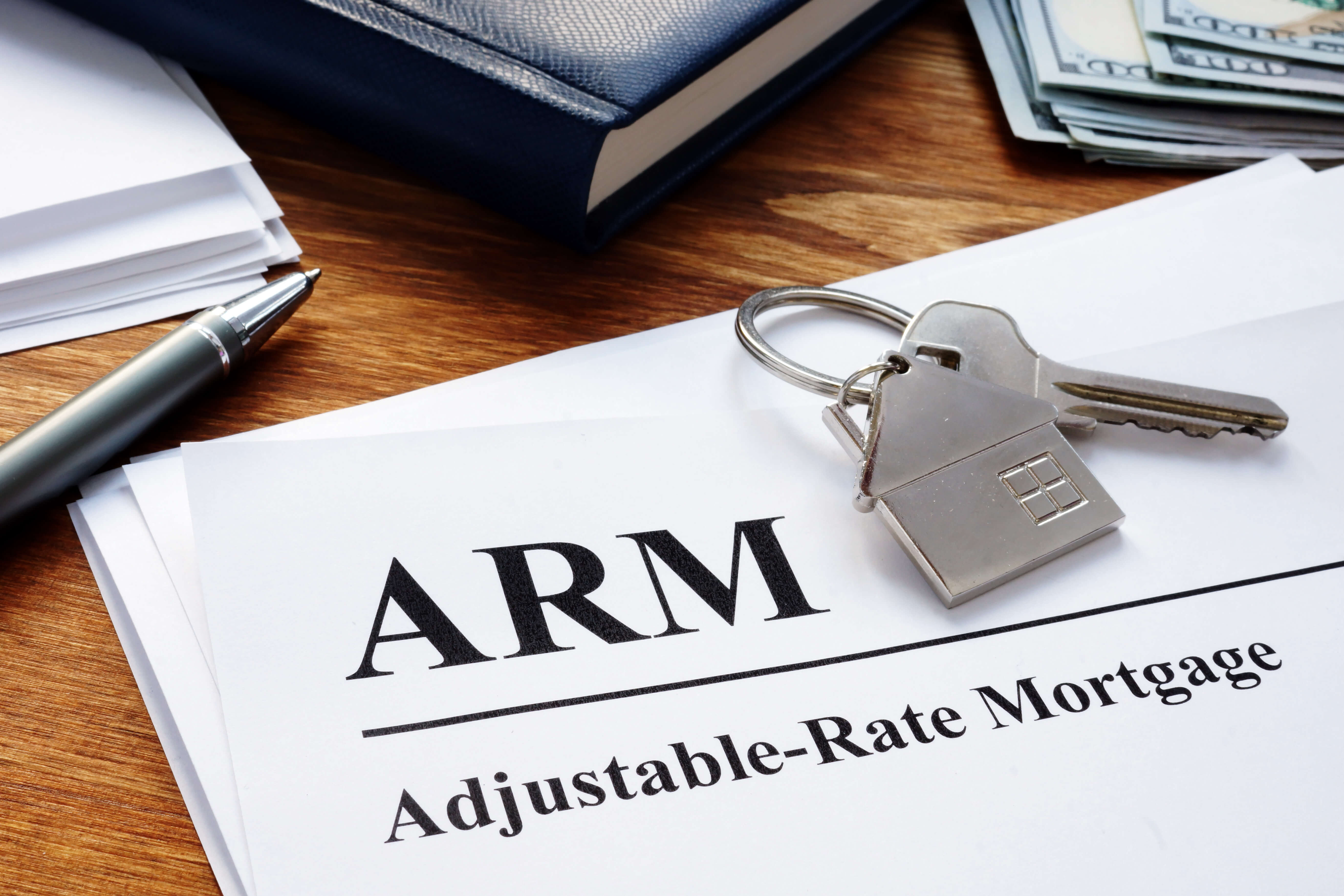Homebuyers have many mortgage options to choose from. For many borrowers, a conventional mortgage with a fixed interest rate for the life of the loan is the best option. However, there are some circumstances in which an adjustable-rate mortgage (ARM) might be the perfect fit.
An ARM is a home loan that starts with a low, fixed interest rate that eventually begins to adjust up or down with market conditions when the initial interest rate period ends.
The initial fixed-rate interest period may last three, five, seven, or ten years, after which the interest rate will adjust at designation intervals for the remainder of the loan term.
Although some borrowers are uncomfortable with the prospect of their interest rate going up, homebuyers who meet specific criteria can benefit in the long term. For example, an ARM is an excellent loan option if:
- You aren’t going to live in the house very long.
- You can pay off the mortgage quickly.
- You want or need a low monthly payment now and you’re willing to risk paying a higher interest rate later.
Anatomy of an ARM Loan
ARM interest rates are driven by two components: the margin and the index. The margin refers to a fixed number of percentage points that are added to the variable index to determine your interest rate when the initial period ends.
An index is a financial indicator that changes based on market conditions. Several different indexes can be used to calculate ARM interest rates. Together, the index and margin determine all future interest rate adjustments on your ARM.
However, it’s important to note that some transitions are occurring within the financial industry that will impact ARM indexes and, by extension, their rate adjustment periods and interest rate caps.
Changes Are Coming for ARM Indexes
Historically, most ARMs used the London Interbank Offered Rate (LIBOR) benchmark interest rate as the index. However, in 2012, officials discovered that multiple banks were conspiring to manipulate LIBOR, leading to mispriced financial contracts that impacted mortgages, student loans, and other common financial transactions.
The LIBOR scandal was the catalyst for lawsuits, compliance penalties, sweeping regulatory changes, and erosion of public trust in the financial markets. As a result, LIBOR is in the process of being phased out worldwide and replaced with alternative benchmark interest rates, including the Secured Overnight Financing Rate (SOFR) for USD loans.
What You Need to Know about SOFR
One of the key attributes of SOFR is that it’s less risky than LIBOR because it can’t be manipulated as easily.
LIBOR is based on the rates that financial institutions claim to offer other financial institutions for short-term loans. SOFR, on the other hand, is based on the actual rates paid for completed overnight loans between financial institutions.
Additionally, LIBOR is unsecured, so it includes a risk premium, whereas SOFR is secured using collateral, such as U.S. Treasury bonds, so there is no added risk premium.
The transition from LIBOR to SOFR for ARM loans ramped up in 2020, when most mortgage lenders switched from LIBOR to SOFR ARMs and Fannie Mae and Freddie Mac stopped buying LIBOR ARMs with application dates later than September 30, 2020.
At the government level, the Federal Housing Administration, U.S. Department of Veterans Affairs, and U.S. Department of Agriculture stopped support for new LIBOR ARM loans at the end of 2020.
After June 30, 2023, all remaining LIBOR loans will be discontinued and transitioned to a new benchmark interest rate.
What SOFR Means for Borrowers with ARMs
Although financial institutions will feel the most impact from LIBOR’s retirement, as SOFR-indexed loans gradually replace many LIBOR loans, borrowers with ARMs will see a few differences:
Rate Adjustment Periods
Unlike LIBOR, SOFR is a backward-looking index. This means that it averages short-term interest rates over 30 days, instead of anticipating where the market will go over the next 12 months.
As a result, ARM rate adjustment periods will adjust every six months instead of once per year.
Interest Rate Caps
Another significant change is how interest rate caps are applied. LIBOR loans could fluctuate up or down a maximum of two percentage points during each annual adjustment.
Due to the increased frequency of rate adjustment periods, SOFR loan interest rates can only go up or down a maximum of one percentage point every six months.
Naming Conventions
Traditionally, lenders named ARMs based on the length of the initial rate period and how often your interest rate can change each year during the adjustment period. For example, if you have a 5/1 LIBOR ARM, your loan has a five-year fixed interest, after which the lender can adjust your rate once per year.
Because SOFR ARMs adjust every six months, the number after the slash indicates the number of months between rate adjustments. So, if your SOFR loan has a ten-year initial fixed-rate period, your ARM will be denoted 10/6.
Find the Mortgage That Is Right for You
It’s important to know your mortgage options if you are in the market for a new home. With changes occurring in the industry almost daily, working with an experienced mortgage lender can help you navigate everything from ARM index transitions to loan pre-approvals and every mortgage scenario in between.
Contact us or apply now, and one of FFB Mortgage Lenders’ experienced loan officers will be in touch to learn how we can help.
About the Author
-1-1.png)
First Federal Bank Mortgage Lenders
We’re honored to be your partner in the homebuying process. And like any good relationship, it helps to know who you’re working with. A home is the most important purchase we can make in a lifetime. At FFB, we’re built to deliver exceptional customer service from your first call to your closing day and beyond. First Federal Bank has helped families find the right loan to fit their needs for decades.
